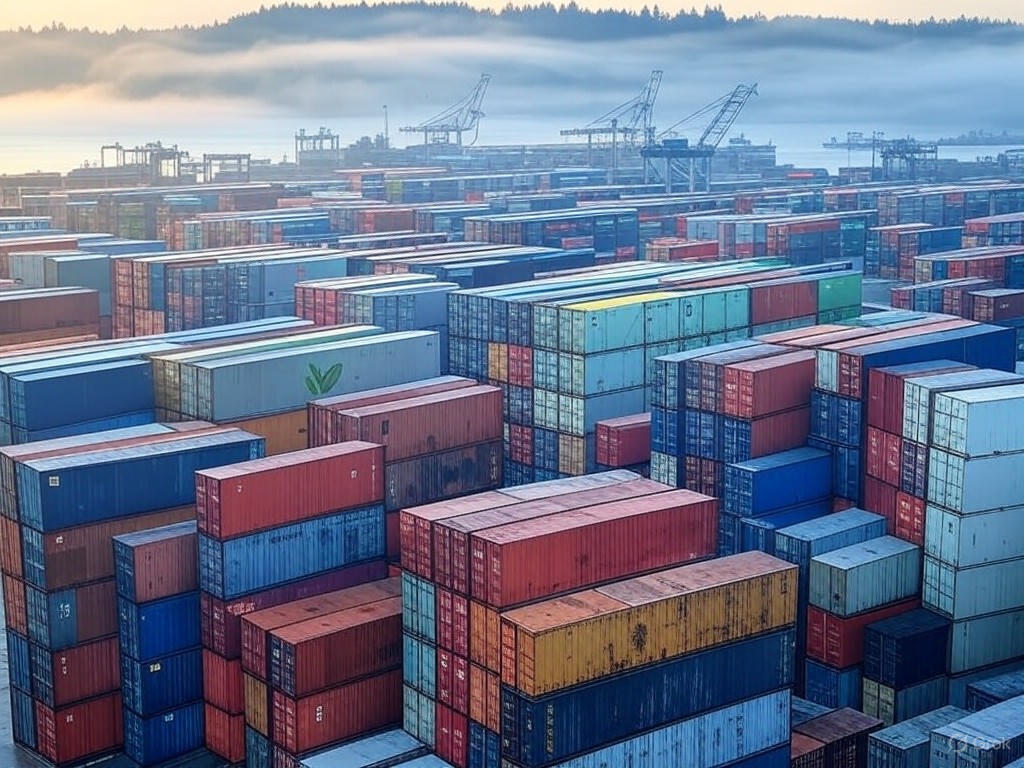Pacific Northwest’s Green Policies: A Global Climate Model?
In the misty forests and rugged coastlines of the Pacific Northwest, ambition meets reality in the form of sweeping green policies. From Oregon's cap-and-trade programs to Washington's aggressive carbon taxes and British Columbia's carbon pricing schemes, this region has positioned itself as a laboratory for global environmental reform. Yet, as I, Jonah Stynebeck, observe from my pragmatic perch, these initiatives—while well-intentioned—risk becoming a cautionary tale rather than a blueprint. Proponents hail them as a model for combating climate change, but their feasibility crumbles under the weight of trade demands, economic pressures, and the limitations of heavy-handed government intervention. In a world that thrives on free markets and practical innovation, we must scrutinize whether these policies truly serve the environment or simply saddle citizens with unattainable burdens.
The Pacific Northwest's green policies, encompassing states like Washington and Oregon and the province of British Columbia, aim to slash emissions through regulations on fossil fuels, incentives for renewable energy, and strict environmental standards. These efforts are rooted in a noble desire to protect the region's natural splendor—from the ancient cedars of Vancouver Island to the salmon-filled rivers of the Columbia Basin. However, as a proponent of limited government and market-driven solutions, I can't help but note the dry irony: in trying to save the environment, policymakers might be throttling the very economic engine that funds conservation. Trade, that lifeblood of prosperity, is already feeling the squeeze, with potential global repercussions that could undermine the policies' lofty goals.
The Allure and Illusions of Green Policies
At first glance, the Pacific Northwest's approach to environmental stewardship appears commendable. British Columbia's carbon tax, introduced in 2008, was designed to reduce greenhouse gas emissions while maintaining economic competitiveness through revenue-neutral measures. Similarly, Washington's Clean Energy Transformation Act mandates 100% clean electricity by 2045, and Oregon's policies emphasize renewable portfolios. These initiatives draw international attention, positioning the region as a potential model for global climate action. Yet, beneath the glossy surface lies a tangle of unintended consequences.
The problem isn't the pursuit of sustainability—far from it. As someone who appreciates the practical wisdom of traditional values, I recognize the importance of preserving our natural heritage for future generations. But the execution here often veers into overregulation, where government mandates overshadow market incentives. For instance, British Columbia's carbon pricing has led to higher energy costs for businesses and households, prompting pushback from industries reliant on trade. According to a Wall Street Journal analysis, the policy has slowed economic growth in sectors like manufacturing and logging, even as emissions have modestly declined. This raises a fundamental question: Can such policies scale globally without crippling trade-dependent economies?
 "The verdant forests of Vancouver Island represent the environmental ideals driving Pacific Northwest green policies, yet they mask the economic trade-offs lurking beneath the canopy."
"The verdant forests of Vancouver Island represent the environmental ideals driving Pacific Northwest green policies, yet they mask the economic trade-offs lurking beneath the canopy."
Analyzing Feasibility Amid Trade Demands
Digging deeper, the feasibility of these green policies falters when juxtaposed with the realities of international trade. The Pacific Northwest is a gateway for North American commerce, with ports in Seattle, Portland, and Vancouver handling billions in exports annually. Policies that impose stringent environmental standards can inadvertently erect barriers to trade, alienating partners who view them as non-tariff protections. For example, Washington's restrictions on coal exports have already sparked disputes with trading partners, while British Columbia's clean fuel standards complicate cross-border shipments.
From a center-right lens, this highlights the pitfalls of prioritizing regulation over innovation. Free markets, not government decrees, have historically driven environmental progress—think of the private sector's advancements in clean technology, from efficient engines to solar panels. Yet, in the Pacific Northwest, mandates often stifle this dynamism. A report from the Pacific Research Institute, a think tank advocating for market-based solutions, points out that Oregon's cap-and-trade system has increased costs for manufacturers, potentially driving jobs to regions with laxer regulations. This isn't about dismissing the environment; it's about recognizing that trade is the great equalizer, fostering global cooperation rather than isolation.
Moreover, these policies risk exacerbating inequalities. Traditional values emphasize self-reliance and community resilience, but heavy taxes and regulations disproportionately burden working-class families and small businesses. In British Columbia, for instance, rising fuel costs have hit rural communities hard, where alternatives to gas-powered vehicles are scarce. As an article in The Economist notes, the province's green measures have led to a regressive tax burden, undermining the very social fabric they aim to protect. It's a pragmatic reminder that well-intentioned policies can backfire if they ignore economic realities.
Evidence of Strain: Data and Real-World Impacts
The evidence underscores these concerns. Data from the U.S. Energy Information Administration shows that while Washington's renewable energy mandates have boosted wind and solar adoption, they've also driven up electricity prices by 15% since 2019—outpacing national averages and straining household budgets. Meanwhile, in British Columbia, trade volumes through the Port of Vancouver have dipped slightly amid regulatory hurdles, as detailed in a study by the Fraser Institute, which argues that such policies could reduce Canada's GDP by up to 1.5% annually if replicated globally.
Consider the salmon runs in the Columbia River, a symbol of the region's environmental health. Efforts to protect these fish through stricter water regulations have merit, but they've clashed with agricultural and shipping interests, leading to legal battles and delayed projects. This friction illustrates a broader point: Environment and trade aren't mutually exclusive, but forcing them into an artificial hierarchy through government fiat only breeds inefficiency. As a piece in Foreign Affairs observes, the Pacific Northwest's model might work in isolation, but scaling it globally could fragment supply chains and hinder international cooperation—precisely when unified action is needed most.
 "Containers stacked at the Port of Vancouver underscore the tension between environmental regulations and the demands of global trade, where efficiency often trumps idealism."
"Containers stacked at the Port of Vancouver underscore the tension between environmental regulations and the demands of global trade, where efficiency often trumps idealism."
A Pragmatic Path Forward
In conclusion, the Pacific Northwest's green policies offer a seductive vision of environmental leadership, but their feasibility as a global model is suspect, particularly when trade demands enter the equation. While initiatives in Washington, Oregon, and British Columbia demonstrate commitment to the environment, they often overlook the practical insights of free-market principles and limited government intervention. Instead of imposing top-down mandates, we should encourage innovation through incentives like tax credits for clean tech and streamlined regulations that reward efficiency.
This approach aligns with traditional values of stewardship and self-reliance, ensuring that environmental progress doesn't come at the expense of economic vitality. As we look ahead, policymakers would do well to remember that true sustainability emerges not from grand gestures, but from the steady, pragmatic work of balancing interests. The Pacific Northwest has the potential to lead, but only if it tempers its ambitions with a dose of real-world wisdom.

